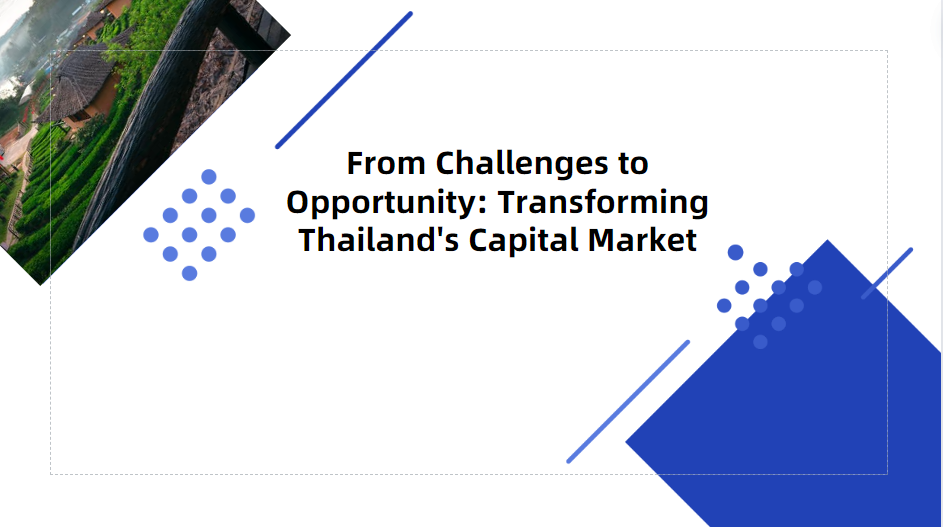Burkhard Balz: Is CBDC the money of the future?
Keynote speech by Mr Burkhard Balz, Member of the Executive Board of the Deutsche Bundesbank, at the Central Bank Payments Conference, Kuala Lumpur, 10 June 2024.
1 Introduction
Ladies and gentlemen,
Thank you very much for your warm welcome. It is both an honour and a pleasure for me to be here today in the wonderful city of Kuala Lumpur and to have the opportunity to speak here to such a distinguished audience.
A city that has always been a melting pot of cultures and ideas, Kuala Lumpur is no stranger to innovation and transformation. From the days of trade along the Klang River to becoming the financial heartbeat of Malaysia, this city has continually adapted to the evolving tides of commerce and technology. As we stand here today amidst the towering skyscrapers and vibrant streets, we are at the cusp of embracing a financial evolution that promises to redefine our experience with money and commerce.
This is the context within which I wish to focus the topic of my keynote this morning – central bank digital currencies, or CBDCs for short. A subject that is as timely as it is significant.
2 The future is digital
We are living in an exciting time where digitalisation is impacting almost every aspect of our daily lives. It has not only changed the way we communicate, learn, work, and engage with the world around us, it has also reshaped the way that we pay. Electronic means of payment have become a widespread alternative to established physical cash and have developed even further in recent times. New digital payment solutions such as instant payments, request-to-pay and pay-per-use are also gaining traction.
These are all developments that also pose new challenges for central banks. As central bankers, we need to ask ourselves what our own role in payments should be in an increasingly digital world. After all, citizens' trust in payments depends on this. In an increasingly digital world, banknotes and coins are still the only means of access to central bank money for the general public. It stands to reason that central banks need to provide an additional digital offering to ensure that access to central bank money is maintained for everyone, even in a digital future. Note that I deliberately say "additional" here, because in my view, banknotes and coins still have their place as a tried-and-tested and still frequently used means of payment. CBDCs should complement cash and not replace it.
3 CBDCs and their implications for central banks?
Due to your great familiarity with the topic I am sure I don't need to explain what CBDCs are. However, I would like to emphasise the following: CBDCs could fundamentally change the way our financial system operates, and it is therefore imperative that we remain at the forefront of this development in order to ensure stability, trust and efficiency in our monetary system.
Central banks around the globe are initiating projects with the intention of issuing their own CBDC. The aim is not to introduce another separate currency, but to create a new, digital form of central bank money in existing currency areas. Whilst a small number of countries have already launched a CBDC, such as the Central Bank of the Bahamas with its "Sand Dollar", other central banks are at the pilot stage, such as China with its "e-Yuan". In fact, a survey conducted by the Bank for International Settlements (BIS) showed that almost 93 percent of responding central banks are currently engaged in some form of CBDC research.
As central bankers, it is our duty to carefully consider the implications of CBDCs. We must ask ourselves: How can we design a CBDC that is consistent with our mandate of price stability, financial stability and secure payment systems? And how can we ensure that a CBDC complements, rather than disrupts, our existing monetary framework?

4 Why is the Eurosystem considering issuing a CBDC – the digital euro?
In Europe, the Eurosystem – which comprises the European Central Bank (ECB), the Bundesbank and the other national central banks in the euro area – is also actively working on the possible issuance of a CBDC, the digital euro.
There are many reasons why central banks across the globe are investigating the possible introduction of a CBDC and there is, in my view, no global "one size fits all" answer to this question. It all very much depends on a country's specific circumstances. Let me outline the three key motivations behind the possible introduction of a digital euro in Europe.
First, there is the issue of sovereignty in payments. The European payments landscape is highly fragmented. Despite a number of initiatives over the years to join forces and to work on a joint European solution, 25 years after the introduction of the single European currency, the euro, we still do not have a European payment solution that can be used across the entire euro area and that runs on a European infrastructure.
Added to that, we are seeing new players enter the payments market with innovative business models and convenient applications for users. Bigtech firms are leveraging their existing digital platforms with international customer bases to expand into new markets.
However, these payment solutions are typically run on non-European payment infrastructures. In addition, they often form a fairly closed ecosystem. This brings us to the legitimate question of whether we want to be heavily, or even solely, dependent on a few international players when it comes to an infrastructure as critical as our payment system. The rising geopolitical tensions in recent years have ultimately highlighted the risks that such a dependency can entail.
In order to strengthen Europe's resilience and independence in payments, it is essential that we start developing our own solutions – made in Europe. As ECB President Christine Lagarde once so aptly put it: (-) The best insurance against a more uncertain world is building more resilience at home. With a digital euro, we would have a payment solution in the form of public money for retail payments across the entire euro area – and we would have that under European governance.
Second, we have been seeing a growing trend towards cashless payments in Europe for many years now. This trend has recently accelerated in response to the COVID-19 pandemic. In Germany, for instance, the share of cash transactions in consumers' daily payments has fallen to 58 percent, down from 74 percent in 2017.1 At the same time, e-commerce is booming.
Cash is currently the only form of central bank money available to non-banks, including the general public. It is public money. All other means of payment for euro area citizens are provided by commercial issuers. Public money is a cornerstone of our financial system. It does not only define the unit of account. In combination with regulation, it also ensures that a euro is (literally) equivalent to a euro, no matter who issued the means of payment. A digital euro would preserve access to secure central bank money for everyone in the digital world.
The third motivation is that a digital euro could promote competition and innovation in European payments. For instance, intermediaries could have the option of offering innovative payment solutions based on CBDC. By providing a programmable and secure digital infrastructure, CBDCs open up a world of possibilities for the development of new financial products and services. Smart contracts for automated payments, decentralised finance, and micropayments are just some of the innovative applications that could become a reality in a future CBDC ecosystem.
5 What would a digital euro be?
The digital euro would not merely be a digital upgrade of banknotes and coins, but also a symbol of Europe's commitment to innovation, financial inclusion, and the seamless integration of Europe's economies. Ultimately, it would pave the way for our currency to enter the digital age by making it "future-proof" and fit for purpose in an increasingly digital society.
The digital euro would be an additional means of payment alongside cash and would give citizens in Europe the option to pay electronically with central bank money. And that would be the case throughout the entire euro area in a total of 20 European countries, and potentially beyond, in almost all everyday payment situations – be it at the checkout in retail stores, among friends and relatives, when making purchases online, or even when making payments to or receiving payments from public authorities.
It would also offer the highest possible level of protection in terms of user privacy. Only cash offers a level of privacy comparable to the digital euro. And cash will continue to exist.
A digital euro would be free of charge for private individuals for its basic functions and could be used both online and offline, that is to say without a connection to the internet, as well as for person-to-person (P2P) payments. No other digital means of payment in Europe currently offers all these functions.
The digital euro would be available to users both via their commercial bank's mobile banking solutions and via a dedicated digital euro app that would be accessible to all users.
6 Where do we currently stand with the digital euro?
So where do we currently stand with our digital euro project in Europe?
In October of last year, the Eurosystem successfully completed its two-year investigation phase. During this phase, the European Central Bank and the other central banks in the euro area explored the benefits and implications of the possible introduction of a digital euro. One of the main objectives was to delve deeper into the possible future design of the digital currency. And as you can imagine, this was no walk in the park!
That said, we now have a clear idea how a future digital euro could look. We also know from a product design and distribution perspective that it would be possible to develop a digital euro that would meet users' needs and requirements as well as those of the Eurosystem.
Nevertheless, the introduction of the digital euro also harbours some risks that warrant consideration. These concern the stability of the financial system, to name just one example. After all, the digital euro could create incentives for enterprises and households to shift deposits out of the banking sector into digital euro. Periods of heightened uncertainty could see abrupt and substantial outflows that could pose risks to financial stability.
The Eurosystem is aware of the potential risks and will take care to ensure that they do not materialise. First, the Eurosystem has no intention to remunerate digital euro holdings. And second, there will be a holding limit. Both measures underline that the digital euro is not intended to be a store of value.
As you can see, there are still a number of questions yet to be answered. We are, after all, still in the middle of our journey.
So, where do we go from here?
7 What are the next steps?
Based on the findings of the two-year investigation phase, the ECB's Governing Council decided to progress to the next stage of the project, the first stage of the preparation phase, which is scheduled to last two years. The preparation phase will lay the foundations for the potential issuance of a digital euro. During this phase, the work of the Eurosystem central banks will focus on finalising the digital euro rulebook and selecting providers that could potentially develop a digital euro platform and infrastructure.
That said, this transition to the first stage of the preparation phase should by no means be taken as an indication that a final decision on the future introduction of a digital euro has already been taken. Before any such decision can be made, a stable legal framework must first be established. It is now up to the European co-legislators to deliberate on the legislative proposal that was put forward in June of last year by the European Commission – the executive arm of the European Union.
The legislative proposal foresees, amongst other things, granting the digital euro legal tender status, which would strengthen its role as public money. Only once this legal framework has been finalised can the necessary steps be taken for the actual implementation and introduction of the digital euro.
So as you can see, there is still a lot of work to be done!
8 Conclusion and outlook
Ladies and gentlemen,
Exploring CBDCs is not just a technical exercise; it is also a strategic necessity. It is an opportunity for us to shape the future of money and payments in a way that serves the interests of both our citizens and the economy. Let us embrace this challenge with the diligence and foresight that have always characterised our institutions.
As we embark on this journey, let us be guided by our commitment to the public good. We must strive to create a CBDC that reflects the values of our institutions: stability, trust and efficiency.
It goes without saying that such a complex journey towards the possible introduction of a CBDC does not come without its fair share of challenges. Yet these are challenges that we can overcome, and by that, I mean overcome together.
Thank you for your attention and I look forward to continued discussions with all of you.
1 EHI-Studie 2023
The views expressed in this speech are those of the speaker and not the view of the UDF Space.






















































First, please LoginComment After ~